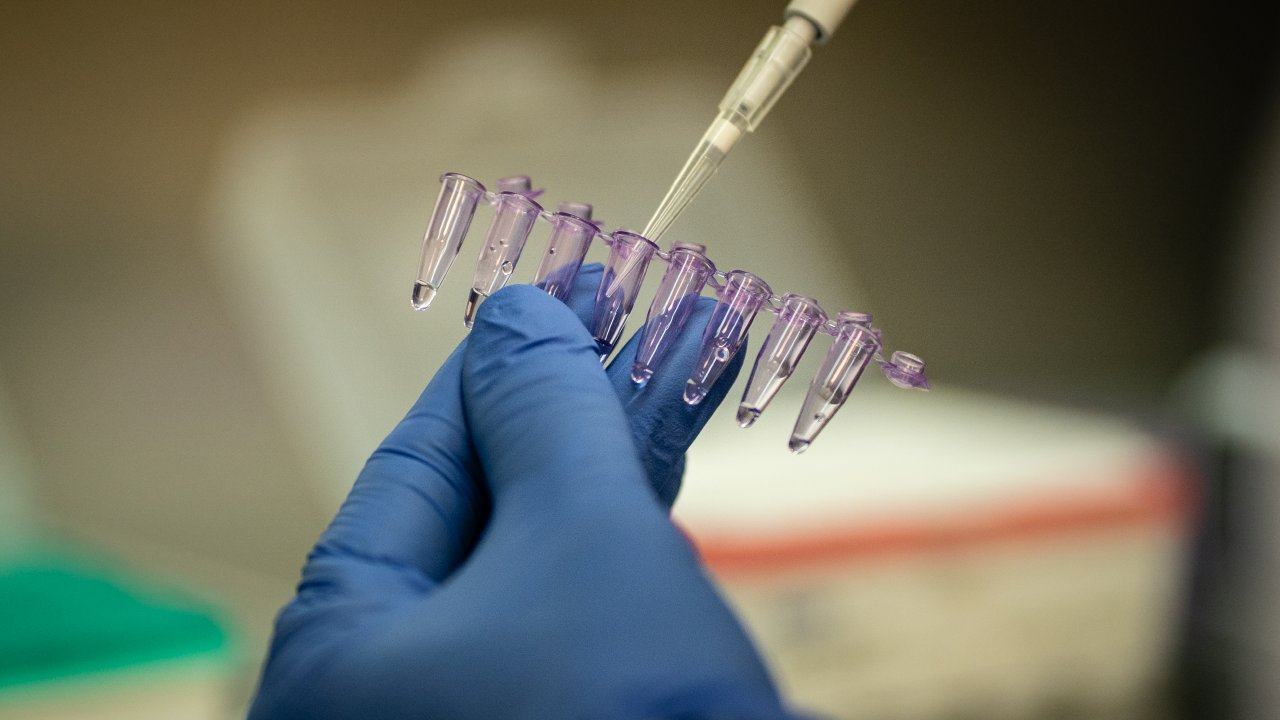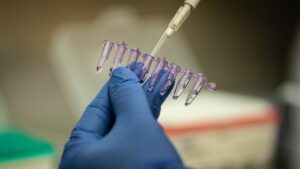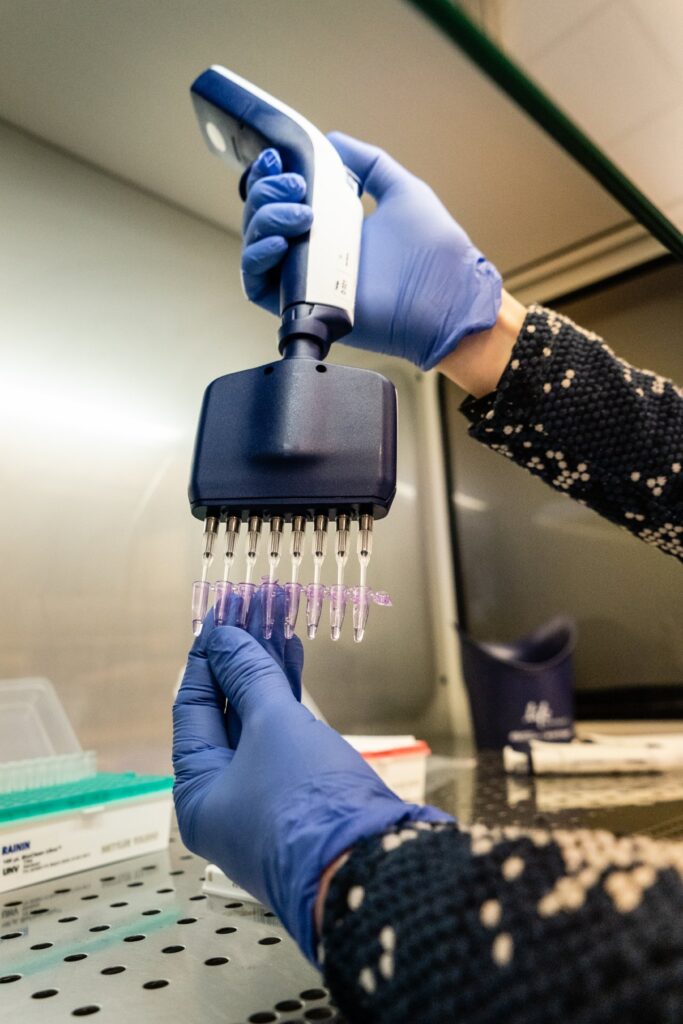May 2021 – De Tijd, by Jan De Schamphelaere
Belgium is the world leader in research into fertility problems in couples. The start-up Fertiga is the result of this. “Helping couples who want to have children, that’s what we do it for.”
Every year 5,000 to 6,000 babies are born in Belgium through ‘assisted reproduction’, artificial fertilization. That’s about one in 20, which means that almost every kindergarten class in our country has a test-tube baby. For most women and couples, this is preceded by a months-long process: hormone treatments, hospital visits, failed attempts and a lot of trial and error. While the techniques for making the impossible have evolved, more than 40 years after the birth of the UK’s first test-tube baby, there’s still a lot of room for improvement.
The essence
- The Brussels start-up Fertiga has developed a test that doubles the chance of success in a first IVF attempt to more than 60 percent.
- This test costs 1,000 to 1,500 euros and is already offered at UZ Brussel.
- The roll-out in Belgium and in the rest of the world was delayed due to the pandemic.
Doubling the chance of pregnancy
One of these recent improvements comes from Johan Smitz, professor, and researcher at the VUB in Brussels. His scientific breakthrough resulted in the start-up Fertiga. “With our knowledge, we succeed in doubling the chance of pregnancy and birth,” says Elien Van Hecke, one of the founders.
With the classic approach, only 30 percent of women achieve a healthy baby on their first attempt. Those are the lucky ones, because with an average couple who goes to a fertility clinic, several embryos are implanted before it hits. And one in three just doesn’t succeed.
Big leap forward
A new study of more than 600 women shows that Fertiga increases the chance of success on the first try by up to 61 percent. After three attempts, that’s almost 80 percent. “That’s a big leap forward,” he said. That can mean a big saving for the health budget of the government. And most importantly, it makes a huge difference to the patient.
“A journey like this is very important. If you don’t experience it, you can’t imagine it,” says Smitz. “A wish to have children is very drastic and puts pressure on the patient and the couple. You are constantly working on it. You undergo the procedure, you anxiously await the pregnancy test. If it’s negative, that’s hugely demoralizing. Then you have to pick yourself up again so that it will work next time. Many – one in four – drop out after just one failure.”
15%
THE WORLD HEALTH ORGANIZATION ESTIMATES THAT 15 PERCENT OF COUPLES STRUGGLE WITH FERTILITY PROBLEMS.
More attention for couples
Van Hecke: ‘Couples deserve more attention. Moreover, they deserve to have techniques developed that make the process more comfortable for them.’
A classic approach consists of hormone treatment, after which an average of ten eggs are harvested and fertilized. A doctor then chooses one embryo to implant, the rest goes into the freezer for possible later. This choice is not made on the basis of a visual inspection and the morphology of the embryo. “That’s not optimal. The most beautiful is not always the strongest,’ says Smitz. “We add an extra dimension to that.”
“Cell cloud”
With Fertiga everything revolves around a cloud of small cells that form a kind of shell around the egg cell. That cloud of cells is of no use for the treatment itself and will be removed, but it does contain a lot of valuable information about how the egg has developed. ‘We analyze the molecular properties of that cloud of cells and give all oocytes a quality score based on that. In combination with the embryo inspection, this produces great results’, says Van Hecke.
Ten years of research preceded this. ‘It is fantastic that the technology is finding its way to the market. That’s what you do it all for, to help couples with problems’, says Smitz.
Patients who request the test still have to pay for it out of their own pocket. The price is between 1,000 and 1,500 euros. A luxury product? Only for the lucky few? “We feel the willingness to pay for that, and it makes the process so much more comfortable for the woman,” it sounds. “In Belgium, a lot is repaid, but an enormous amount of time is lost. As a starting company, we cannot count on that. But we have no doubt that the test is interesting from a health economic point of view.’
GOVERNMENT SAVINGS
Fertiga estimates that the government can save several million euros per year in this way. With full reimbursement of the test, Fertiga speaks of 1 million euros per 1,000 women who start a fertility program.
The test is already offered at UZ Brussel, which houses the largest fertility center in our country. But that’s where it ends. Commercialization has been delayed due to the pandemic. The timing of the start-up’s launch was particularly unfortunate. Between January and March last year, Fertiga hired six people, only to find that fertility centers – non-essential care – closed for several months, both in the spring and in the autumn. “We have to live with that harsh reality,” she says. And another fun anecdote. The cells we analyze are actually corona cells. We originally launched our test under the brand name Coronatest. We have now adjusted that,” says Van Hecke, who used to work at Roche Diagnostics.
International potential
Fertiga also targets non-Belgian couples. It is conducting talks in Germany. “This has international potential,” says Van Hecke. “According to the World Health Organization (WHO), one in six couples have difficulties conceiving. Of course, not everyone goes to a fertility center, but even with a fraction of that, we are talking about large numbers. We see an annual growth of 5 to 10 percent. In Europe it is more like 5 percent, in China, where it is still on the rise, it’s more like 10 percent.’
Van Hecke realizes that Fertiga is not the holy grail for all couples. “One try, one child. That should be the goal for everyone. But it’s not that simple. Medicine will still make progress, but there will always be a group of patients who will never succeed.”
The start-up of Fertiga is yet another proof that Belgium is the world leader in fertility research.
Source: De Tijd, https://www.tijd.be/ondernemen/farma-biotech/belgische-technologie-verdubbelt-kans-op-zwangerschap-via-ivf/10303063 (Dutch NL)




